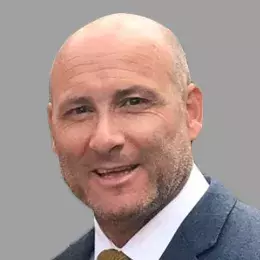Is Your Collection Operation Stepping Up to the Pandemic Challenge?
Beyond short-term impacts, portfolios, workforces and operating models are changing

In The World Is Changing — So Can We, singer David Byrne asks, “Is there something we can learn from this, something that will prepare us to better weather the next crisis, some different way of being that might make us stronger?”
Byrne’s isn’t the only voice calling for thoughtful, positive change. There are many others—one of the most heartening things about these difficult days. We’re being asked to step up not only in our social and personal lives, but in our businesses as well.
What does this mean for collection operations? Here in the UK, after the first few weeks of trying to just survive the tidal wave of inbound calls from customers, organizational leaders are starting to think a bit further ahead. They’re asking themselves, “Are we ready to handle the mid-term and long-range effects of the pandemic?” And even, “What can we do to make sure our operations come out of the crisis in as good shape as before—or maybe better shape?”
Now is the moment to ask and answer these questions, as the next six months will be critical for taking action.
I believe that on the other side of this crisis, collection portfolios, workforces and operating models will all have dramatically changed. Companies that prepare now for this new world will be strong competitors. Companies that don’t are risking a very uncertain future.
Immense proof-of-concept underway
The sudden operational changes collection organizations have been forced to make under pandemic conditions are proving two things beyond doubt:
- The necessity of intelligent automated omnichannel customer communications. I’m not just talking about sending SMS notifications, but about being open 24x7 for interactive dialogs with customers across the channels they choose. I’m talking about scalability to handle virtually any volume of demand and the agility to rapidly change rules, workflows and scripts in dynamic situations.In China, this is how FICO clients weathered the early days of the pandemic. For one client, faced with 20-times inbound call volume and zero agents, automated communications handled 100% of calls with no downtime. In the UK, where most collection operations have been able to switch a good number of their agents to working from home, automated omnichannel communications are essential for coping with increased volume and can handle 50% or more of inbound contacts.
- The feasibility of home-basing agents. While there are still plenty of details to work out, having collection agents work from home is clearly do-able and the advantages are becoming evident. Home-basing solves the problem of matching workforce capacity to the best times for talking with customers (not the same as the best times for contacting them to schedule a conversation). Agents working from home can do multiple short shifts per day, enabling capacity to flexibly adjust to customer preferences and case volumes.
This widespread proof of concept is accelerating the digital transformation of traditional banks, not only in collection, but in customer management and origination as well. I think we will see projects that were 3-5 years out now moving into the 6-12-month range.
Overwhelmingly logical business case for digital transformation
The business case for digital transformation in collection has never been clearer or more compelling. For collection organizations that have been fighting for a share of the resources flowing toward the revenue-generating side of the bank, now is the time to make the case with renewed urgency.
To start with, intelligent automated omnichannel communication is one of the quickest solutions in terms of time to value, with some of the highest return on investment ratios. Four to eight weeks and between 5: 1 and 7:1 is typical.
On top of that, reducing impairment under IFRS 9 is a key business case driver. Automated communications are especially effective at handling early-stage debt, preventing accounts from rolling to stage two. In Europe, a FICO client in the banking sector experienced a 160% uplift in auto resolution which delivered a 20% reduction in overall delinquencies. Even though banks have gained some impairment relief, since COVID-19-impacted accounts don’t have to be provisioned against, that will not always be the case. Banks need to avoid a potentially huge impairment burden down the road.
And now we have massive evidence of the critical role automated communication plays in flexibly scaling collection operations, with associated loss and cost savings (revenue-side impacts from customer attrition may also become apparent later on). It’s proven that automation can handle the majority of cases (with improved timing, consistency and compliance, at a fraction of the cost of an FTE) while enabling a reduced workforce of home-based agents to shift their focus onto helping customers with complicated needs.
Something better for collection operations, consumers, employees and bottom lines
Can we make a better world? From a social and personal point of view, I hope so. From a collection operations point of view, I’m quite sure the answer is yes.
For consumers, the new world means the convenience, ease, and privacy of being able to resolve overdue debts 24x7 with numerous ways to do it and the option of scheduling a conversation with a real person. Study after study tell us that is what today’s consumers want, especially Millennials and Gen Zs.
For employees it means the opportunity to do more meaningful, skillful work with more flexibility around work hours. That opens up agent jobs to people who don’t want a traditional eight-hour shift.
For bank bottom lines, it means savings from reducing labor costs and eliminating the costs of call center facilities.
With all that in mind, why would any collection operation want to unwind the steps taken and lessons learned during the pandemic to return to the past?
Popular Posts

Business and IT Alignment is Critical to Your AI Success
These are the five pillars that can unite business and IT goals and convert artificial intelligence into measurable value — fast
Read more
FICO® Score 10T Decisively Beats VantageScore 4.0 on Predictability
An analysis by FICO data scientists has found that FICO Score 10T significantly outperforms VantageScore 4.0 in mortgage origination predictive power.
Read more
Average U.S. FICO Score at 717 as More Consumers Face Financial Headwinds
Outlier or Start of a New Credit Score Trend?
Read moreTake the next step
Connect with FICO for answers to all your product and solution questions. Interested in becoming a business partner? Contact us to learn more. We look forward to hearing from you.
